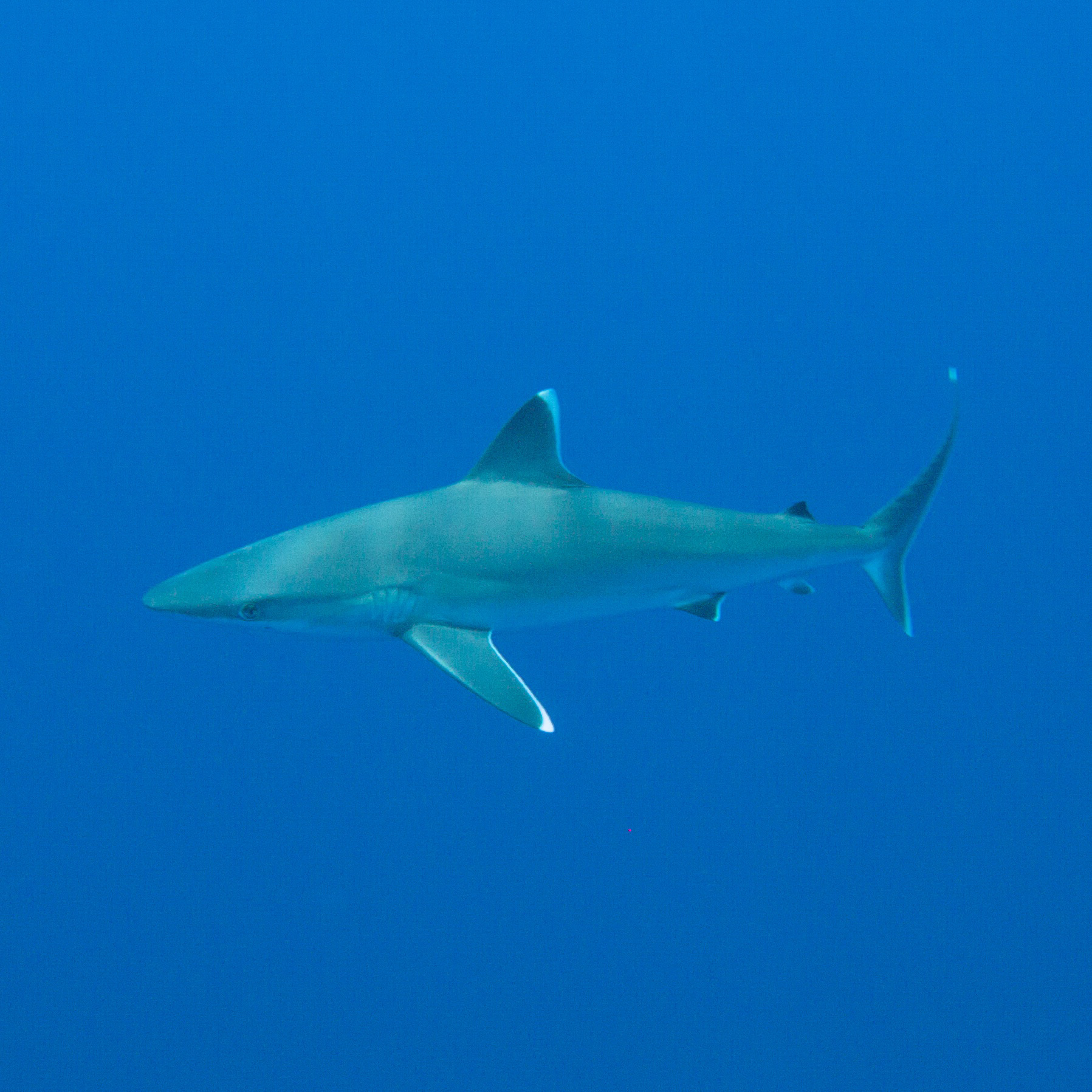New research has revealed the depths warm water-loving reef sharks will go in their search for food, after an international team of scientists tracked silvertip sharks diving as far as 750m below the ocean's surface.
"The joint effect of climate change and overfishing on species like reef sharks requires us to address the individual problems at their source, and to reduce their interaction."
Professor Jessica Meeuwig, Wen Family Chair in Conservation at UWA
The study, published in Marine Ecology Progress Series, followed the vertical movements of seven silvertip sharks (Carcharhinus albimarginatus) around reefs in the Chagos Archipelago in the Indian Ocean over six months, using electronic tags to record water depth and temperature.
Lead author, Adjunct Research Fellow at UWA's Ocean Institute Dr David Tickler, said the sharks, which use surrounding water to regulate body temperature, spent most of their time in the warm and oxygen-rich shallows of coral reefs, but were also tracked plunging into the depths.
"The sharks were observed to make dives of up to 750m, with regular forays into the colder and darker waters of the mesopelagic zone, 200m or more below the surface," Dr Tickler said.

He said clues as to why the sharks would venture out of the warm surface waters lay in their response to changing light levels in the water – day versus night and full moon versus the new moon – which showed the sharks moving deeper as light levels increased, and vice versa.
"This behaviour is likely triggered not by the light itself, but by the behaviour of the sharks' prey," Dr Tickler said.
He said the migration of billions of small animals and fish up to the ocean's surface at night to feed on phytoplankton, and down to the safer darker depths during the day, was a key rhythm of the ocean and one that silvertip sharks may follow to maximise their chances of finding food.
"The deeper dives allow the sharks to access these resources during daytime, and to hunt animals that never come to the surface," Dr Tickler said.
Detailed analysis of a specific shark's dives revealed a distinctive pattern of rapid descent, brief time spent at depth and a swift return towards the surface, closely correlated with the vertical habitat structure.
"This suggests vulnerability to habitat changes, a concern amplified by global warming's impact on ocean structure and oxygen levels," Dr Tickler said.
Co-author and Wen Family Chair in Conservation at UWA, Professor Jessica Meeuwig, said changes in the depth of suitable thermal habitat for sharks could also make them more vulnerable to another human pressure, fishing, as they are forced to occupy shallower and more predictable depths.
"The joint effect of climate change and overfishing on species like reef sharks requires us to address the individual problems at their source, and to reduce their interaction," Professor Meeuwig said.
"While action on climate change will take decades to change the warming trajectory, immediate protection from fisheries, through the targeted use of highly protected marine parks, is a quick solution to decouple these twin threats."
Marine scientists from UWA, Stanford University's Hopkins Marine Station and the Zoological Society of London took part in the study.






